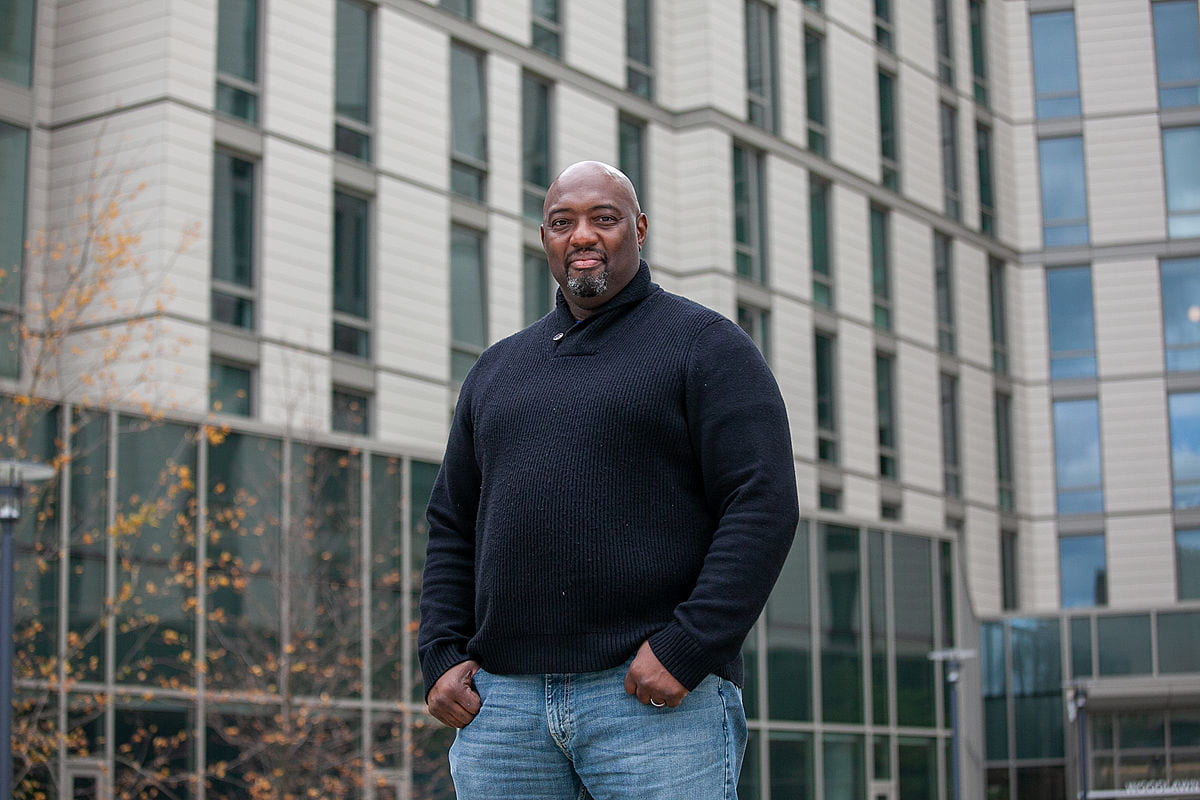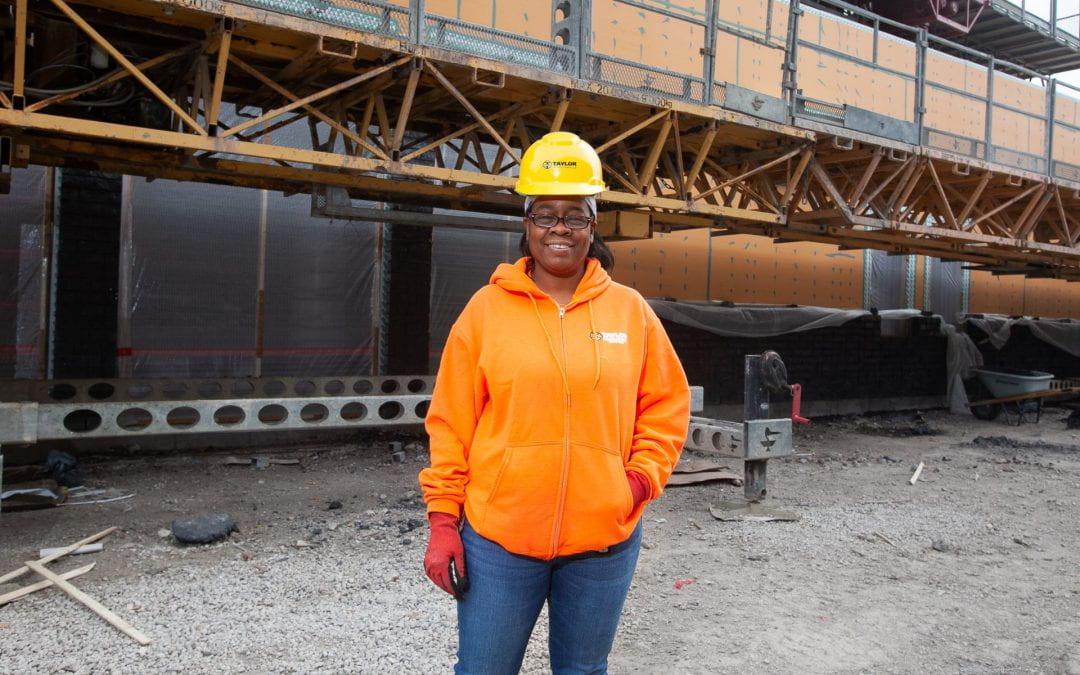Growing up in Woodlawn, Michelle King says she was the “handywoman” among her five siblings — so when her dad had a nearby carpentry job, she often tagged along. “He used to tell me ‘Don’t become a carpenter because they work too hard,’” King remembers. “He said become an electrician, and my first day as an electrician I was like, ‘Dad, electricians work really hard!’”
This month King’s hard work paid off as the Woodlawn Residential Commons at the University of Chicago, the first high-rise building of its scale that King has served as electrical foreman for, welcomed its first residents. Students — who recently moved into the new 1,309-bed dining and residence hall at reduced density to limit COVID-19 exposure risk — can admire King and other local, women, and minority workers and contractors’ handiwork in everything from the building’s electrical systems to its freshly-painted dorm room walls.
“That’s my community, so it’s really good to be able to work within your own community,” King, who now lives in Washington Park, said.
The Woodlawn Residential Commons project is located between Woodlawn and University avenues just north of 61st Street and was developed by Capstone Development Partners, the University’s development partner. The project was built by Turner Construction, Capstone’s general contractor partner.
The Woodlawn Residential Commons is the most recent example of the University’s commitment to creating opportunities for local workers and minority- and women-owned firms through campus construction and renovation projects. “We know our neighboring communities view these projects as critical employment opportunities, particularly in this uncertain time, and we’re determined to work with our development and construction partners to ensure those who have traditionally been underrepresented in this type of work are being given jobs and contracts,” said Derek Douglas, Vice President for Civic Engagement and External Affairs. “A strong, diverse workforce brought the Woodlawn Residential Commons project to life and we are pleased with what we were able to accomplish in partnership with Turner Construction and our shared community.”
According to contractor data, a total of 68 workers from the zip codes that represent the University’s nine-neighborhood focus area on the South Side were hired for the Woodlawn Residential Commons project and 64% of total laborer hours were completed by minority laborers. Chicago-based workers put in a total of 187,134 hours on the project, nearly 40 percent of the project’s total hours.
Of the total investment in contractors on the Woodlawn Residential Commons project, 29% went to minority-owned firms and 8% went to women-owned firms. According to contractor data, the total investment rises to 36% for minority-owned firms and 12% for women-owned firms when adjusted to include the full cost of material supplies purchased by subcontractors and project overhead costs such as site management, material handling and project management.
In 2018, UChicago launched the Inclusive Construction Initiative website (ici.uchicago.edu) to share data related to each active construction project on campus and progress the University and UChicago Medicine have made toward the ambitious construction diversity goals established in early 2017. Those goals include:
- 35 percent minority-owned contractors
- 6 percent women-owned contractors
- 40 percent construction workers who live in the city of Chicago
- 30 percent of hours from minority journey workers and apprentices
- 5 percent of hours from female journey workers and apprentices
- 40 percent of hours from minority laborers
- 5 percent of hours from female laborers
While the Woodlawn Residential Commons contract was signed prior to the new goals being set, Capstone and Turner made workforce and contractor diversity on the project a priority and exceeded several of the more ambitious goals. Turner hosted outreach events to facilitate connections between community members, vendors, contractors, and trade unions and, rather than rely on more established companies to take on larger elements of the workload, they divvied up major construction tasks into smaller subcontracts and sought out growing minority- and women-owned firms from the Chicagoland area who might not otherwise be able to secure work on a project of this scale.

For Edward McKinnie Jr., president of Vision Painting in Calumet Park, inclusive construction goals like the ones that drove the Woodlawn Residential Commons project not only help minority-owned businesses like his land jobs, they also set up companies for success on future projects.
“Those kinds of goals allow us to have our foot in the door. In years past without those goals, many of the minority firms wouldn’t have a shot. They just wouldn’t,” McKinnie, who lived in Woodlawn for 10 years, said. “Those goals give all of us an opportunity to showcase what we can do and then, of course, once we’re given that opportunity, then it’s all on us. And for many of us, once we’re given that opportunity to showcase, then that contractor will say ‘they do good work, they make the schedule, they come in on time’ — that allows us to flourish and to grow.”
Seeing the building completed and opened to students has been meaningful for McKinnie: “It gives you a sense of pride that that’s something that you contributed to building.”
Woodlawn Residential Commons will house approximately 1,300 undergraduate students and resident staff when it can accommodate full post-pandemic capacity, along with amenities, including lounges, study rooms, and outdoor spaces. The facility, designed by Elkus Manfredi Architects, will have 11 houses—residential communities that foster close academic and social networks throughout a student’s time at the College.
In addition to its primary role as a dining space for students, the dining commons will be available for public use when the building fully opens and will employ permanent and temporary staff with a goal of at least half of those employees being South Side residents.
